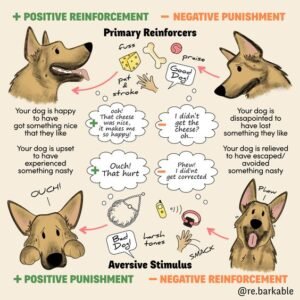Have you ever wondered why your dog exhibits Territorial Behavior such as growling or barking at unfamiliar people or animals who enter your home? In this article, we will delve into the fascinating world of Territorial Behavior in dogs and provide you with tips on how to effectively manage it. Understanding the reasons behind your furry friend’s protective instincts will not only help you create a safe and comfortable environment for them but will also deepen your bond with your beloved canine companion.
Understanding Territorial Behaviour in Dogs
Dogs are naturally territorial animals, and understanding their territorial behavior is crucial for creating a harmonious and safe environment for both the dog and its owners. Territorial behavior can manifest in various ways, such as barking, growling, and even aggression. It is essential to be able to identify these signs and understand the reasons behind such behavior in order to effectively manage and address it. This article aims to provide a comprehensive understanding of territorial behavior in dogs, including its definition, common signs, reasons, and different types of territorial behavior. Additionally, it will explore the factors influencing territorial behavior, methods for managing it, and preventative strategies to ensure a positive and peaceful relationship with your furry companion.
Defining Territorial Behaviour
Territorial behavior in dogs refers to their natural inclination to protect and claim a specific area as their own. This behavior is deeply rooted in their ancestry as pack animals. Dogs often exhibit territorial behavior to defend their resources, such as food, water, toys, and sleeping areas. They may also engage in territorial behavior to protect their family members, both human and canine, as well as property boundaries. Understanding the significance of territorial behavior and recognizing its various forms is essential for establishing appropriate boundaries and ensuring overall well-being for your dog.
Common Signs of Territorial Behaviour
Dogs display various signs to communicate their territorial nature, and it is important for owners to be able to identify these signs to address any potential issues. Some common signs of territorial behavior include excessive barking and growling when strangers or other animals approach their territory. Dogs may also show signs of aggression, such as lunging or biting, to protect their perceived boundaries. Other indicators of territorial behavior include marking with urine or feces, fence running, or erecting their hackles. Understanding these signs can help owners recognize when their dog is displaying territorial behavior and take appropriate measures to manage and modify it.
Reasons for Territorial Behaviour
Territorial behavior in dogs stems from a variety of factors. One primary reason is the instinctual need to protect resources and ensure their survival. Dogs have a strong instinct to guard their territory, which can be traced back to their pack mentality in the wild. In addition to resource protection, territorial behavior may also stem from fear, insecurity, or a lack of socialization. Dogs that have not been adequately exposed to different situations and environments may feel threatened by new people or animals entering their territory. Understanding the reasons behind territorial behavior is essential in order to address and manage it effectively.
Types of Territorial Behaviour
Territorial behavior in dogs can be categorized into different types based on their response to perceived threats. One type is defensive territorial behavior, where the dog displays aggression or defensive postures when they feel their territory is being invaded or threatened. Another type is possessive territorial behavior, where dogs guard their resources, such as food, toys, or even people, within their territory. Lastly, there is territorial aggression, where dogs show aggression towards people or animals that they perceive as a threat to their territory. Recognizing the type of territorial behavior exhibited by a dog is crucial in determining the appropriate management and training techniques to address it.
Factors Influencing Territorial Behaviour
Several factors can influence a dog’s territorial behavior, including genetics, breed, age, and socialization. Understanding these factors can help owners identify potential triggers and provide appropriate training and management strategies.
Genetics and Breed
The genetic makeup of a dog can significantly contribute to their territorial behavior. Certain breeds, such as guard dogs like German Shepherds or Dobermans, are predisposed to have a stronger territorial instinct compared to other breeds. It is important to research and understand the breed characteristics and tendencies before bringing a dog into your home to ensure a good match with your lifestyle and ability to manage their territorial behaviors.
Age and Developmental Stages
Territorial behavior in dogs can vary at different stages of their life. Puppies may exhibit more exploratory behavior and less territoriality, while adolescent dogs may start showing signs of territorial behavior as they seek to establish their place in their social group. Understanding these developmental stages is important for effective management and training from an early age.
Socialization and Training
Lack of proper socialization and training can contribute to a dog’s territorial behavior. Dogs that have not been exposed to different people, animals, and environments may become fearful or anxious in unfamiliar situations, leading to heightened territorial behavior. Socializing dogs at a young age and providing appropriate training can help alleviate territorial tendencies and foster more positive behavior.
Health and Well-being
A dog’s health and well-being can also influence their territorial behavior. Certain medical conditions or underlying pain may cause dogs to become more defensive or protective of their space. Ensuring that your dog is in good health through regular veterinary check-ups and appropriate care can help minimize any negative effects on their territorial behavior.
Managing Territorial Behaviour
Managing territorial behavior in dogs involves understanding triggers, creating a safe environment, positive reinforcement training, behavior modification techniques, and seeking professional help when needed.
Recognizing Your Dog’s Triggers
Identifying specific triggers that set off your dog’s territorial behavior is essential for effective management. It could be the presence of strangers, other animals, or even certain noises. By observing and understanding your dog’s reactions, you can anticipate and prevent situations that may escalate their territorial behavior.
Creating a Safe and Secure Environment
Providing a safe and secure environment for your dog is crucial in managing territorial behavior. This can be achieved through proper fencing and enclosures to establish clear boundaries. Managing access points, such as doors and windows, can prevent unnecessary confrontations or opportunities for territorial displays. Additionally, providing enrichment and mental stimulation can help alleviate boredom and reduce the likelihood of territorial behavior.
Positive Reinforcement Training
Positive reinforcement training techniques are highly effective in managing territorial behavior. Reward-based methods, such as treats or praise, can be used to reinforce desired behaviors and redirect the dog’s focus away from territorial triggers. Basic obedience commands, such as “sit” or “stay,” can help establish a strong foundation of control, which is necessary when managing territorial behavior. Additionally, desensitization and counterconditioning can be utilized to change the dog’s emotional response to specific triggers gradually.
Behavior Modification Techniques
In some cases, behavior modification techniques may be necessary to address and manage territorial behavior. This can involve redirecting and distracting the dog’s attention to alternative activities or teaching them alternative behaviors to replace territorial displays. Calming signals, such as yawning, licking their lips, or turning away, can also be used to help diffuse tense situations and reduce the likelihood of aggression.
Seeking Professional Help
For dogs with severe or persistent territorial behavior, seeking professional help from a veterinarian or a certified dog trainer is recommended. They can assess the situation, provide specialized guidance, and create a tailored behavior modification plan to address the dog’s specific needs. In some cases, medication or other treatment options may be prescribed to help manage the dog’s territorial behavior more effectively.
Prevention Strategies
Preventing territorial behavior in dogs starts with early socialization and exposure to various people, animals, and environments. This helps dogs develop confidence and a positive outlook on unfamiliar situations, reducing the likelihood of territorial displays later in life. Proper training and setting clear boundaries from an early age are also crucial in preventing the development of excessive territorial behavior. Regular exercise and mental stimulation provide an outlet for energy and help keep dogs more balanced and less likely to exhibit territorial behavior. Consistent reinforcement of desired behaviors and positive interactions also contribute to preventing territorial behavior from escalating.
Conclusion
Understanding territorial behavior in dogs is essential for developing a strong bond with our furry companions. By recognizing the signs, reasons, and types of territorial behavior, we can effectively manage and address any potential issues. Factors such as genetics, breed, age, socialization, and health can influence a dog’s territorial behavior. Through recognizing triggers, creating a safe environment, positive reinforcement training, behavior modification techniques, and seeking professional help when needed, we can successfully manage territorial behavior. By implementing prevention strategies, such as early socialization, proper training, regular exercise, and consistent reinforcement, we can foster a positive and peaceful relationship with our dogs. With a comprehensive understanding and effective management techniques, we can ensure that our furry friends thrive in a nurturing and secure environment.



